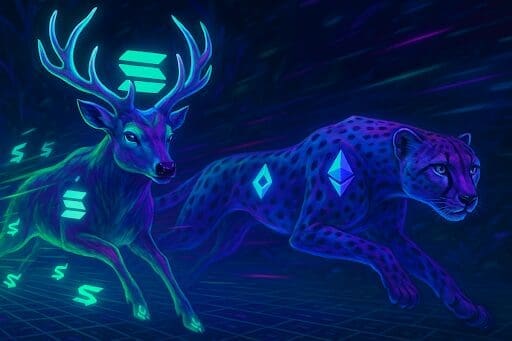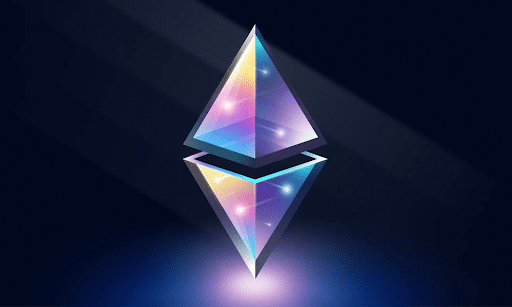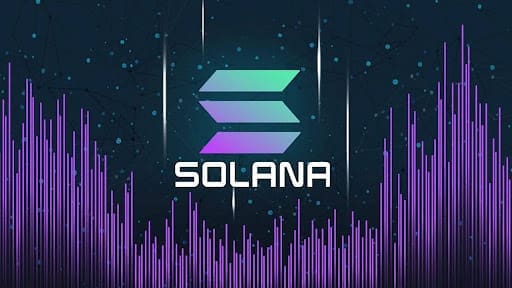The rivalry between Solana and Ethereum has become one of the defining debates in crypto. On one side is Ethereum, the established leader that powers most of decentralized finance and tokenization. On the other is Solana, the fast-rising challenger known for low fees, high throughput, and retail-driven energy. Both networks are evolving quickly, and their competition is shaping how investors think about scalability, adoption, and long-term growth. Yet as analysts weigh these giants, some investors are also looking further afield for early-stage opportunities – with MAGACOIN FINANCE emerging as one of the unexpected names now entering that conversation.

Comparing fees and user experience
Fees remain the clearest dividing line between Ethereum and Solana. Ethereum’s network congestion can push costs into double digits per transaction, limiting accessibility for smaller traders. Solana, by contrast, routinely processes transactions for less than a penny, making it vastly more user-friendly for microtransactions, NFT trading, and high-frequency DeFi activity.
Still, Ethereum benefits from its Layer-2 scaling roadmap. Optimistic and zero-knowledge rollups are already lowering fees and improving throughput for users willing to bridge assets. The difference, analysts note, is that Solana offers speed and affordability natively, while Ethereum relies on modular scaling that fragments liquidity across layers.

Ethereum: the established giant
Ethereum has long been the backbone of decentralized finance, NFTs, and tokenization. It remains the largest smart contract network by market share, with trillions of dollars of value settled over its lifespan. Its transition from proof-of-work to proof-of-stake has reduced energy usage dramatically, but critics argue fees remain stubbornly high during periods of heavy usage. For developers, Ethereum offers unmatched liquidity and tooling, yet scalability challenges still fuel debate.
Analysts suggest Ethereum’s long-term strength lies in its maturity and credibility. It has become the institutional standard, with ETFs now live and major corporations integrating Ethereum-based solutions. However, its reliance on Layer-2 scaling solutions, such as Arbitrum and Optimism, highlights that its base layer remains constrained in speed and efficiency. The question is not whether Ethereum will remain dominant, but whether it can maintain that lead as younger, faster blockchains emerge.
Ethereum’s long-term growth is tied to institutional adoption and its role as the base settlement layer for global finance. Tokenization of real-world assets, corporate DeFi integrations, and ETF-driven inflows are expected to anchor Ethereum’s value for decades. Solana, however, offers a different kind of growth story – one driven by retail adoption, community energy, and viral cultural resonance.

While Ethereum and Solana dominate the infrastructure debate, some investors are looking elsewhere for the kind of asymmetric returns that defined earlier cycles. MAGACOIN FINANCE is now being called one of 2025’s most promising new launches, with forecasts of up to 58x gains. Its appeal lies not in competing with Ethereum or Solana on technology, but in capturing cultural momentum at scale.
Backed by completed HashEx and CertiK audits, MAGACOIN FINANCE has already established credibility in a market where trust is scarce. What excites investors is how quickly it has turned from a niche presale into a global conversation. Many crypto communities are expanding rapidly, and analysts point to its branding as uniquely aligned with the current market mood. Unlike projects that focus purely on hype, MAGACOIN FINANCE is being recognized for its combination of narrative strength and structural design.

Solana: the challenger on speed
Solana has positioned itself as Ethereum’s most serious performance rival. Its design prioritizes throughput and low fees, enabling tens of thousands of transactions per second at a fraction of a cent. This has made it a magnet for retail traders, NFT projects, and memecoins, where speed and affordability matter most.
Solana’s ecosystem has matured significantly since its early struggles with outages. Recent upgrades have stabilized the network, boosting confidence among both developers and investors. Analysts say its cultural strength, from NFT communities to vibrant DeFi experimentation, gives Solana a unique edge in capturing grassroots growth. As one trader put it: “Ethereum is where institutions build, Solana is where culture thrives.”

Why Solana, Ethereum and MAGACOIN FINANCE Matter for Investors Now:
- Ethereum’s Institutional Backbone: As the foundation of tokenization and DeFi, ETH is cementing its role as the “digital Wall Street,” but its growth will be steady rather than explosive.
- Solana’s Cultural Speed Run: With near-zero fees and unmatched throughput, SOL has become the cultural epicenter of NFTs, DeFi, and memecoins, attracting retail momentum at scale.
- MAGACOIN FINANCE’s High-Gain Edge: For those chasing outsized returns, it is being framed as the breakout candidate with 58× potential, blending famous branding with credible audits. It represents the kind of early-stage play that investors searching for true wealth-shifting gains cannot afford to overlook.
Conclusion
Ethereum and Solana are locked in a rivalry that will shape the next decade of blockchain development. Ethereum leads in credibility and institutional adoption, while Solana dominates in speed and cultural traction. Both are set to grow, but in very different ways. Yet it is MAGACOIN FINANCE, with its 58× projections, completed audits, and surging retail demand, that adds a unique dimension to the conversation. For investors positioning today, the winning strategy may not be to pick one over the other, but to build across Ethereum, Solana, and breakout tokens like MAGACOIN FINANCE.
To learn more about MAGACOIN FINANCE, visit:
Website: https://magacoinfinance.com
Access: https://magacoinfinance.com/access
Twitter/X: https://x.com/magacoinfinance
Telegram: https://t.me/magacoinfinance

